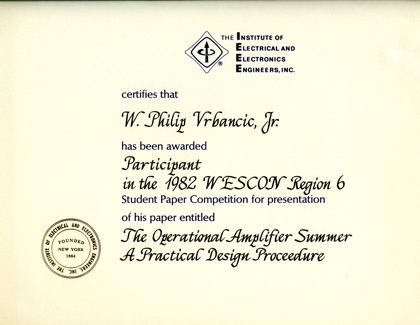About ~ Walland Philip Vrbančić, Jr.
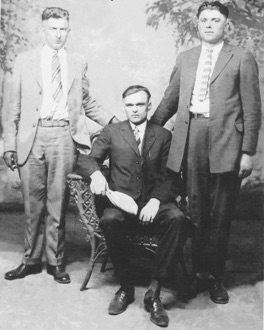
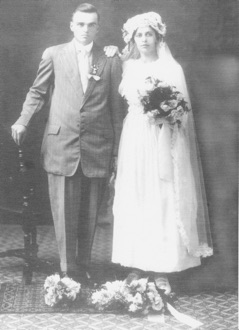
Veronika’s mother Tvka (Eva) Stefančić had already died in 1910 and the steel mill industry was no longer manufacturing wartime supplies by the 1920’s. Vid was finally laid off in 1921 and he could not find any other work in the Cleveland area. He did not want to move his wife, daughter Josephine, and son Andrew to Rankin where his younger brother Franjo was now living and working as a policeman. Veronika’s father Jure, a widower for over ten years now, wrote many letters to Vid and Veronika and pleaded with them to return to Croatia. He even promised to give them his home in Maklen and all of his farm land if they would agree to care for him in his old age. Vid finally relented and he and his family set sail back to Croatia. Unfortunately, Jure had blatantly lied to both Vid and Veronika as he never intended to give them his home or any of his farm land. He also did not want Vid working his farm land using the methods Vid had learned while he was growing up in Trg. Regardless of their near hopelessness, Mathew was born in February, 1922, in Maklen.
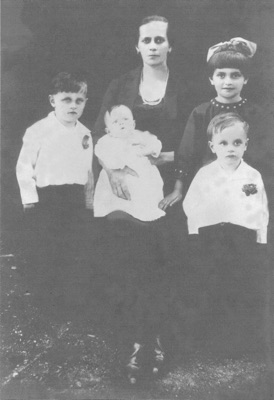
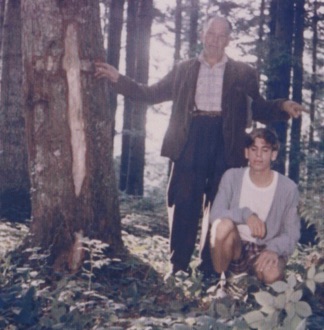
About three months after Rockwell hired me, the Simulation Laboratory manager hired a Computer Science Engineer to join the ranks of Initialization Engineers. He and I had the daunting task of learning how to initialize the computers and electronics that comprised the total simulation of a Space Shuttle trajectory from Main Engine Cutoff (MECO) to landing at a few selected sites within the United States. The computers that were initialized with flight and target parameters included a PDP-11 and two Xerox mainframes. The mainframes were initially programmed using front-panel rocker switches: the Sigma 5 had 16 KB of magnetic core memory and the Sigma 9 had 64 KB of magnetic core memory. We used Hollerith cards to insert faults into the General Purpose Computers (GPCs) like those aboard the shuttle. We used a color Eidophor projector to project visual images of our landing site runways into a shuttle cockpit simulator in which the astronauts trained. Finally, we used Nova computers by DEC and DEC word processing software to generate all required customer documentation and, I might add, to play Adventure.
My system initialization colleague was an early Apple ][ owner when Integer Basic was first available in ROM. The following year Rockwell offered a home computer purchase program and provided us the choice between an IBM PC or the Apple ][+ which had the autostart ROM. My colleague strongly encouraged me to request the Apple computer, and he assisted me in selecting the monitor, the disk drive, and the printer accessories. The total cost was a lot of money for me, but Rockwell loaned me the money and paid the total cost. I repaid the interest-free loan through weekly payroll deductions making the purchase relatively painless. Thus, my dream of having my own personal computer was fullfilled. My ever-constant V-50 and V-201 “blab forth syndrome” did interest another colleague of mine who actually enrolled in the V-50T (i.e. “T” for Tape) course. Later, he enrolled in the V-201 and many other “V” courses after completing V-50T. In fact, he became the personal assistant to Professor Galambos during the last and final trip Galambos made to Budapest, Hungary, his native country. Mrs. Galambos stayed behind to manage the curriculum of their Free Enterprise Institute (FEI). Professor Galambos recognized that he was beginning to display the symptoms of Alzheimer’s disease and he entrusted my colleague with handling more and more of the private living affairs for both he and his wife. Andrew J. Galambos and Suzanne J. Galambos established their Natural Estates Trust that was to manage all of their Intellectual Property. From my vantage point it appeared to me that my colleague participated in and contributed to what I considered to be dishonorable activities not in the favorable interests of this Natural Estates Trust. My colleague’s activities primarily involved the convoluted publishing of Sic Itur Ad Astra by Andrew J. Galambos after his death on April 10, 1997.
I became fascinated with all aspects of the Apple ][+ computer, and I wanted to incorporate it into my studies for my Master’s degree. My assigned advisor was analyzing tomographic reconstructions of the human spinal column, and he thought perhaps I could assist him. He wanted to be able to make measurements between any two points within the computer image of a spinal column, even after rotating or enlarging the image. I was tasked to develop the Fortran programs that could be launched on a Microsoft Z80 peripheral slot card in an Apple ][+ that would provide him with these capabilities. I found an ingenious way to reduce the size of the three-dimensional rotational matrix in order to accelerate data image processing and the remapping of the resulting HIRES image to the computer screen. My professor was very pleased with my progress. However, I was becoming increasingly interested in high-speed graphics animation, and the only way I thought I could learn that technology was to work for Ken Williams at Sierra On-Line. I terminated my work on my Master’s degree, I gave notice to Rockwell, I packed my bags, and I moved to Oakhurst, California.
At Sierra On-Line I was tasked to assist a colleague in migrating ScreenWriter to the new Apple //e which was recently available for purchase. On another project I wrote all of the I/O routines and ICON drawing routines for HomeWord Speller. When I started working as a self-employed contractor, I was given the Goofy’s Word Factory project which was a children’s computer game to teach English grammar. Williams had a license to display certain Disney characters on a bit-mapped computer screen per approval by Disney for visual likeness, color, and movement. I would have finished Goofy’s Word Factory if John (Williams’s brother), the designer of the game, could have developed the third game feature (and strategy) in a timely fashion. He apparently could not do so before I secured a position at Hughes Aircraft Company back in Los Angeles. I did utilize Williams’s high-speed graphics animation algorithms in Goofy’s Word Factory, which I had to redesign in order to include collision detection on a dithered background. No other computer game could detect collisions on a dithered background at that time. Williams was impressed, and it was really hard to impress Williams. I stayed all of 18 months at Sierra.
The major observation I made after I was hired by Hughes Aircraft was how different their culture was to the culture I had experienced at Rockwell. At Rockwell I found it exceedingly difficult to have anyone who had written a software tool or program to explain to me how that tool or that program worked, and the algorithms the software utilized or exploited. When I was tasked to migrate a software tool from Fortran to C language at Rockwell, I found some incorrect logic that eventually affected the final output data. Given certain input parameters, this tool could calculate a three-dimensional corridor in space and either interpolate points within or extrapolate points outside of that corridor. I presented my findings to its original Fortran author showing how I could insert the same incorrect logic into the C code and generate the same wrong output data. He told me to keep the incorrect logic and not disclose my findings to management. I refused. This was totally unthinkable to me, and this would never have happened at Hughes. In fact, CIP awards were given to engineers who found such errors in software and who reported those errors to management. The Hughes culture encouraged the aggressive sharing of knowledge, and it gave rewards to those who made software improvements. The Rockwell culture cultivated self-preservation tactics where knowledge was thought to be job security and not to be shared, but to be kept undisclosed. Hughes certainly provided me with a great opportunity in the Digital Simulation Laboratory where I learned about real time executive software that was hosted on Gould SEL mainframe computers (2750, 6750, 8780, and 9780). I also learned about MIL-STD-1553 protocol communication software and real time software interface drivers to a host of various external data processors. Our purpose was to create a digital time frame in order to simulate in real time the environment for a tactical Radar Digital Processor (RDP) flying above the surface of the earth.
Due to the general slowdown in the engineering industry, I returned to Rockwell in 1990. I believed that my knowledge in real time executive software hosted on SEL mainframe computers would be my passport to a nice software engineering career closer to where I wanted to live. How I regret that major blunder in judgment because my employment at Rockwell was terminated just a few years later. I had co-authored a White Paper outlining the risks associated with using off-the-shelf RISC processors in certain applications, and the response from my colleagues was very unfavorable. This and my disclosure of software errors I uncovered during a Fortran-to-C language conversion eventually led to my dismissal. Fortunately, my former Hughes management was able to reinstate my position, and I was tasked to gain expertise in real time data collection software for tactical radar systems.
Hughes tactical radar systems are programmed to operate in many different modes depending upon various situations and the immediate needs that are faced by the pilot of a military aircraft. During the development of a radar mode, its processing is heavily instrumented which generates a large amount of output data as the mode progresses through its various processing stages. It is critical to capture all this generated data, primary and incidental in nature, in order to ensure and verify that the mode is behaving as expected and is generating its data according to pre-established boundaries, much like comparing the data to some gold standard. My task was to capture all of the In-phase and Quadrature (I/Q) components of radar data in real time, process certain other data components, package the data according to generated source and timestamp, and save the resulting files using some recording device. It is important to understand that there are many independent generating sources of data in a radar system whose timestamps are totally asynchronous. At a later time the data that is packaged in those files would be analyzed to determine if, in fact, the processing modes operated as expected. Physically collecting this I/Q data during real time tactical maneuvers was quite a challenge, and recorders designed to operate in this environment were costly. Preparing for a data collection session involved securing a military aircraft, a flight crew, a ground crew, and people to securely bring the recorded data back to my tempested lab. This certainly added to my responsibilities, and my mantra was to neither add, subtract, nor modify any data word or data bit while that data was in my immediate possession and while my software algorithms extracted and processed that data into prescribed data formats. Those data formats would allow the data analysis tools to function more efficiently for the mode builders.
I was thoroughly vetted and held maximum-security clearances that allowed me to process data from many different and independent classified programs not only in Los Angeles, but also in other locations, and even out of state. The general data collection software engines I began designing in the unclassified world served as my software library for every classified program to which I was assigned. Perhaps I was simply in the right place at the right time that steered my career to become the sole resident expert in Transcription Software Engines. That is, to process, encrypt, and store in real time at least a terabyte of data every second. Or, perhaps I was in the right place at the right time that allowed me to develop a task beyond its envisioned potential. There is a direct ancestral linkage between my unclassified software library of tools, routines, and transcription engines and every single classified program with which I was associated that required my tools, routines, engines, and expertise. I was practicing code reuse light-years before it became a topic that some managers thought could reduce software development costs. “How insightful!” I jokingly thought of management, silently, and very highly disrespectful in my private thoughts. “How insightful!”
Initially, I was given the opportunity to host my current Transcription Software engine on a newly acquired SGI Origin 300 having four bricks, or 16 CPUs. Code reuse made this task fairly straightforward, thus demonstrating the Origin’s practicality for this feasibility study. After a fact-finding tour to the SGI facilities at Mountain View, California, I was given the momentous task of designing a Transcription Software engine for an SGI Origin 3000 having eight bricks (i.e. 32 CPUs) running IRIX, and using Big Endian memory management. This turned out to be one of my greatest solo achievements. Even at this time, little did my management understand how effortlessly I could build my Transcription Software engines primarily using code reuse. I was extremely fortunate to have had one very intelligent manager who casually asked me to think about the possibility of building a digital playback system. Such a system did not yet exist. Some highly respected engineers with PhD. degrees had tried building an analog playback system a few years earlier with absolutely no success. Instead of analyzing the collected instrumented data, one could observe how the simulated RDP behaved when the recorded high-speed I/Q data and the slow-speed environment data were injected back into its system using a playback system. A few months later I presented my first digital playback recorder and pre-processing system, my last and greatest achievement at Raytheon (former Hughes). I was given the unique privilege to design and build a second digital playback recorder and pre-processing system for another classified program. That program, like the previous program which used my first digital playback recorder and pre-processing system, saved countless hours of analysis time and mission costs before I scheduled my overdue retirement.

Now I have the time and the continuing curiosity to delve into the Disk Operating System, that is, the File Management System of the Apple ][ computer. I now have the opportunity to create my own version of a File Management System that contains the power and the flexibility I always believed an Apple ][ Disk Operating System ought to and could have.
I called my previous versions of Apple ][ DOS, DOS 4.1 and DOS 4.3. DOS 4.1 was complete with its 46th build in 2019. DOS 4.3 was complete with its eight build in 2020. What a ride I was on! Why? To see what I could do for this wonderful machine and its magnificent architecture!
I completed DOS 4.1 in March, 2019, after I agreed to have the Build 45 manual published by Call-A.P.P.L.E. I requested no fees, no incentives, nor any royalties. But I continued to innovate DOS 4.1 and Build 46 contains the final modifications I wanted to include in this DOS. I thought that I could not take DOS 4.1 any further due to the memory constraints of DOS 4.1L, and I did not want to increase its size nor add additional sectors to its volume image. However, I could continue to develop Apple ][ DOS if I concentrated only on the Language Card version. I naïvely thought perhaps I could utilize Auxiliary Memory and move DOS there. To that end, I copied my source code for DOS 4.1H into a new directory and gave it a new name, and that was the birth of DOS 4.3. From DOS 4.3 came the birth of DOS 4.5. I continued to develop DOS 4.5 for the remainder of 2020 and through 2021 to the beginning of 2022. As in the development of DOS 4.1 and DOS 4.3, I reached a point with the fifth build where I do not wish to continue any further development of DOS 4.5. And it is now time to complete the DOS 4.5 documentation as well.
I completed the DOS 4.3 documentation and published my second book without assistance in the second half of 2020 and called it DOS 4.3 File Management System. Near the end of 2020 I decided to create and publish a second edition to DOS 4.1 that includes Build 46, and I used the font styles, figure formats, and table formats which I developed for the DOS 4.3 publication. I call this new DOS 4.1 publication the DOS 4.1 Disk Operating System Second Edition. At the end of 2020 I took the final and complete copy of the DOS 4.3 source code and began working on DOS 4.5 which was to be my final and last Apple //e Disk Operating System. DOS 4.5 Build 05 features two systems that are very similar to what I had designed for DOS 4.1 and they are called DOS 4.5L and DOS 4.5H. Both systems highlight an expanded File Manager and many more extraordinary developments. The DOS 4.5 documentation includes a number of new topics of discussion. The DOS 4.5 publication is called the DOS 4.5 File and Volume Disk Management System.
During most of 2023 and into 2024 I continued to develop more DOS capabilities and completed yet another software build only for DOS 4.5H. This build is truly my last Apple //e Disk Operating System and it is called DOS 4.5 Build 06. Its publication is called the DOS 4.5 Volume and File Disk Management System Second Edition and it may be purchased directly from Lulu.com. DOS 4.5.06 features the new SLOAD, SSAVE, and TIME commands, it provides upgrades to previous DOS commands, and it includes a new HELP command. Furthermore, the Second Edition publication includes these new DOS features, the new EPROM Reader and Extension circuits and the new EOS+ companion software, and a new ROM build that enables the READ command in order to support c2t high frequency data file transfers that utilize the cassette data input port.
I have now limited the availability of DOS 4.1 links to those for Build 46 source code, software, and documentation. I have added a link to a sample of DOS 4.3 documentation. I hope the Apple ][ enthusiast sees something new and interesting in DOS 4.5 and in all of the software that is supported by the unique features that are found in DOS 4.5.06.

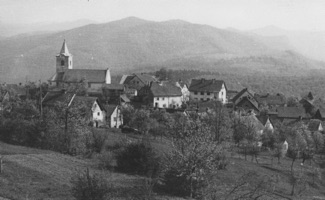
Father says he remembers when the Statue of Liberty first became visible because all of the passengers crowded to that side of the ship to get a good look at the Lady who promised so much to the newly arriving immigrants. When he gazed upon the statue, he was puzzled why everyone seemed so excited at the sight, but he was only six years old. The ship docked at Ellis Island and everyone had to file through the various designated checkpoints. Father remembers having his hair and body examined, and he was given a mental aptitude test which he thought was some sort of game. Once everyone was examined and tested, Veronika gathered up her children and luggage and boarded a train to Cleveland. When they arrived in Cleveland, Father met his father Vid for the first time. I can only imagine what that stern-faced man had to say, if anything, to his youngest son? Everyone was ushered up to a second floor apartment that had three bedrooms. No one seems to remember when Father’s name was changed from Valentin to Walland. Since Father did not speak English, it is believed that a teacher at East Madison Grade School misunderstood the name Valentin when Father pronounced it for her, and she changed it to Walland. Father has been called Wally ever since.
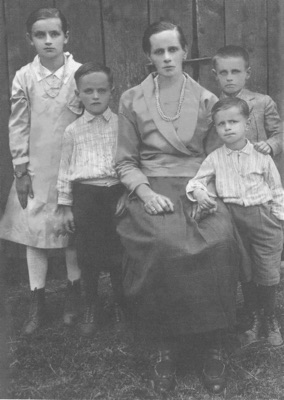
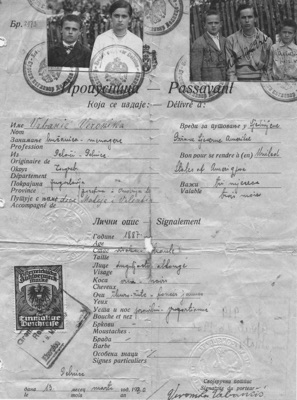
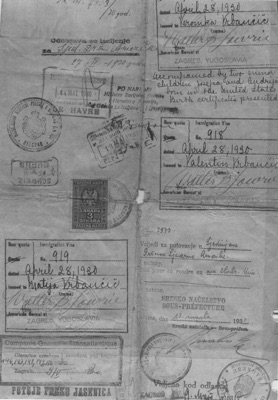



Apparently, many appraisers traveled about England to attend estate sales, and the appraiser who worked with Mr. Main only purchased instruments at those particular sort of sales. My violin, a Gemünder Art Violin (A266), was handcrafted in 1930 by Oscar A. Gemünder of August Gemünder & Sons, New York, New York. It was purchased new, originally for a young English girl who was beginning her studies on the violin. So, this instrument has traveled across the Atlantic Ocean twice before I became its second owner. Not only did Mr. Main match the instrument to me perfectly, he matched an 1801 French violin to my younger sister a year later. Many years passed when I discovered that the American violinist Camilla Wicks was a close friend to the Main family, and when she and Mr. Main’s son were teenagers, they would spar endlessly to see who was the better violinist! When my parents purchased my violin, Mr. Main’s son was already a professional violinist and he performed primarily in Las Vegas, Nevada. Camilla Wicks performed as an international soloist. As for my study of the instrument after Mr. Burger, my private violin teachers included Carol Higley (Lakewood, California) in elementary and junior high school, Professor Frank Bellino (Denison University, Granville, Ohio) in high school, Professor Stanley Plummer (University of California, Los Angeles, California) while at University, and Mr. Allan Carter (Long Beach, California) when I wanted to study and perform chamber music in my mid-forties. Plummer and Carter were both students of Vera Barstow (Pasadena, California), though perhaps nearly a generation apart.
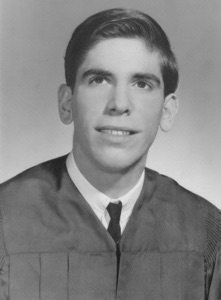

One particularly horrifying experience I had while I was a student at UCLA was when I walked into my second quarter German class and saw the instructor’s name written on the blackboard: Frau Milovanović. She pronounced my name perfectly and clearly, rolling the “r” in my last name majestically, when she took attendance, and she ordered me to stay after class. I knew she was Serbian, or, at least her husband was Serbian, but that did not matter to me. When the other students left the classroom and were out of earshot, she told me I was a “dirty, filthy Croatian” and she wanted to know if I was going to give her any “trouble” (she used other colorful language as well). Literally, shaking in my boots, I told her I was born an American and I did not have any resentment towards any ethnic group of people. I worked my tail off in that class and I managed to squeak by with a “C” grade. She found fault in most everything I wrote. After the final exam I thanked her for all of the “special” attention she gave me! At least I did not have a “melt down” entirely, but finished my studies, and was graduated with a Bachelor’s of Science degree in Zoology.
Father suggested I enroll in a two-year program through the USC Medical Center for training as an Orthopedic Physician’s Assistant. I thoroughly enjoyed every aspect of that program, I completed all of the requirements, and I earned my certificate to work as an OPA. I was quickly hired by a local hospital where I worked for over nine years. By the mid-seventies I had already worked as an OPA for about four years when I experienced some sort of intellectual “awakening” and decided Father was right after all, and I should have studied engineering, particularly Electrical Engineering. My epiphany to return to another tour of undergraduate studies was perhaps precipitated by the lectures I was attending at that time. The lectures were given by the renowned Astrophysicist Andrew J. Galambos, PhD. Professor Galambos was now an entrepreneur giving lectures on Volitional Science. I had already enrolled in his V-201 course which continued for over a year, one three-hour lecture once a week with a few weekend sessions as well. Previous to the V-201 course, I had enrolled in Professor Galambos’s V-50 course which was now being presented by J. S. Snelson. It would not be possible for me to summarize here the knowledge I gained from the V-50 and the V-201 courses, and from several other lectures I attended to celebrate unique and historical events.
Before I enrolled in the OPA program at USC Medical Center, I did work as a phlebotomist in a doctor’s office for nearly two years. Both doctors treated obese patients using diet and an array of medications they prescribed and provided onsite. In the early 1970’s it was common practice to prescribe either Dextroamphetamine Sulfate or Levoamphetamine Sulfate (the enantiomer of amphetamine), or any of the combinations of these powerful and addicting drugs with other ingredients to help promote weight loss. More importantly, I had a lot of spare time during working hours, and my manager allowed me to read. In fact, she encouraged me to read the works of Ayn Rand. I even attended a few meetings where I was introduced to laissez-faire capitalism. Years later I suppose that when I heard Snelson’s presentation of V-50 I was entirely comfortable with the subject of capitalism, and I was amazed at how far the concepts of Galambos had surpassed those of Rand. After attending the V-201 course, it was very difficult for me to manage the “blab forth syndrome”, and I was guilty of trying to explain some of the concepts from V-201 to my colleagues for many, many years. Once again, it is something that is difficult to explain in short order.
It was completely normal for me to take apart, dismantle, and study the innards of every toy, train, erector set, chemistry set, or electrical set Santa brought me when I was young, and reconstruct that toy to working order, without inflicting any significant internal damage. Countless times Father would see a radio or tape recorder completely disassembled on the floor of my room and ask me, laughingly, “How long until it works again?” This sense of curiosity even when I was very young should have given me a clue as to what I should have initially studied at University. I have felt some degree of regret that it took me nearly ten years after high school to realize my mistake. Electrical Engineering became my absolute passion. I worked full time on second shift at the hospital and during the morning hours I attended at least three lecture classes and I included one laboratory class each semester for the next five years. IEEE published my original paper that detailed my theoretical design equations for multiple input operational amplifier summers, and my professors submitted me for the Alton B. Zerby Outstanding Student Award. I won first place in the Region Six IEEE Student Paper contest and placed third nationally that same year during WESCON in 1982. My operational amplifier design equations were also published in a textbook written by one of my professors on that subject. All of these accomplishments coupled with a 4.0 GPA gave me many choices for my next employer. Father worked for Rockwell International, though it was originally known as North American Aviation. I did interview at TRW and I received a very lucrative job offer, but I decided to join the team at Rockwell, in the Space Shuttle Simulation Laboratory. I was hired about five months before the launch of STS-1, thus changing my hospital scrubs for a coat and tie, and a whole lot more money!

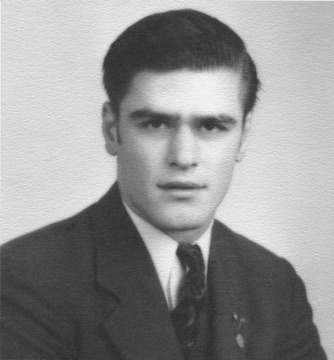
Operational Amplifier Report Link:

